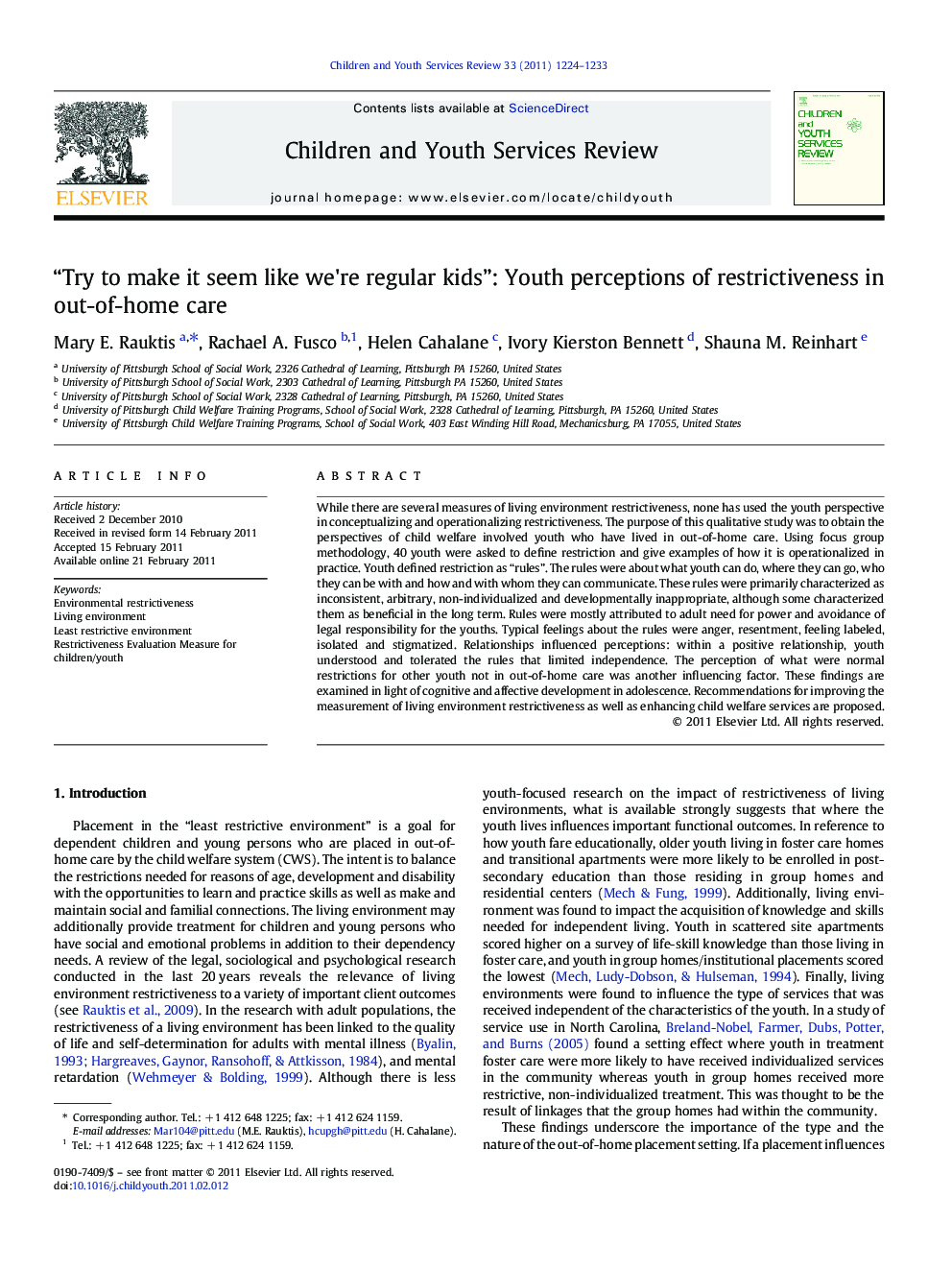| Article ID | Journal | Published Year | Pages | File Type |
|---|---|---|---|---|
| 346871 | Children and Youth Services Review | 2011 | 10 Pages |
While there are several measures of living environment restrictiveness, none has used the youth perspective in conceptualizing and operationalizing restrictiveness. The purpose of this qualitative study was to obtain the perspectives of child welfare involved youth who have lived in out-of-home care. Using focus group methodology, 40 youth were asked to define restriction and give examples of how it is operationalized in practice. Youth defined restriction as “rules”. The rules were about what youth can do, where they can go, who they can be with and how and with whom they can communicate. These rules were primarily characterized as inconsistent, arbitrary, non-individualized and developmentally inappropriate, although some characterized them as beneficial in the long term. Rules were mostly attributed to adult need for power and avoidance of legal responsibility for the youths. Typical feelings about the rules were anger, resentment, feeling labeled, isolated and stigmatized. Relationships influenced perceptions: within a positive relationship, youth understood and tolerated the rules that limited independence. The perception of what were normal restrictions for other youth not in out-of-home care was another influencing factor. These findings are examined in light of cognitive and affective development in adolescence. Recommendations for improving the measurement of living environment restrictiveness as well as enhancing child welfare services are proposed.
Research highlights► Youth in out-of-home care were asked what factors make a placement restrictive. ► Youth equate restrictiveness with rules. ► Rules are perceived as a means of control or as avoiding legal responsibility. ► Youth affective response to the rules was primarily negative. ► Perceptions of normal and relationships moderated affective responses.
